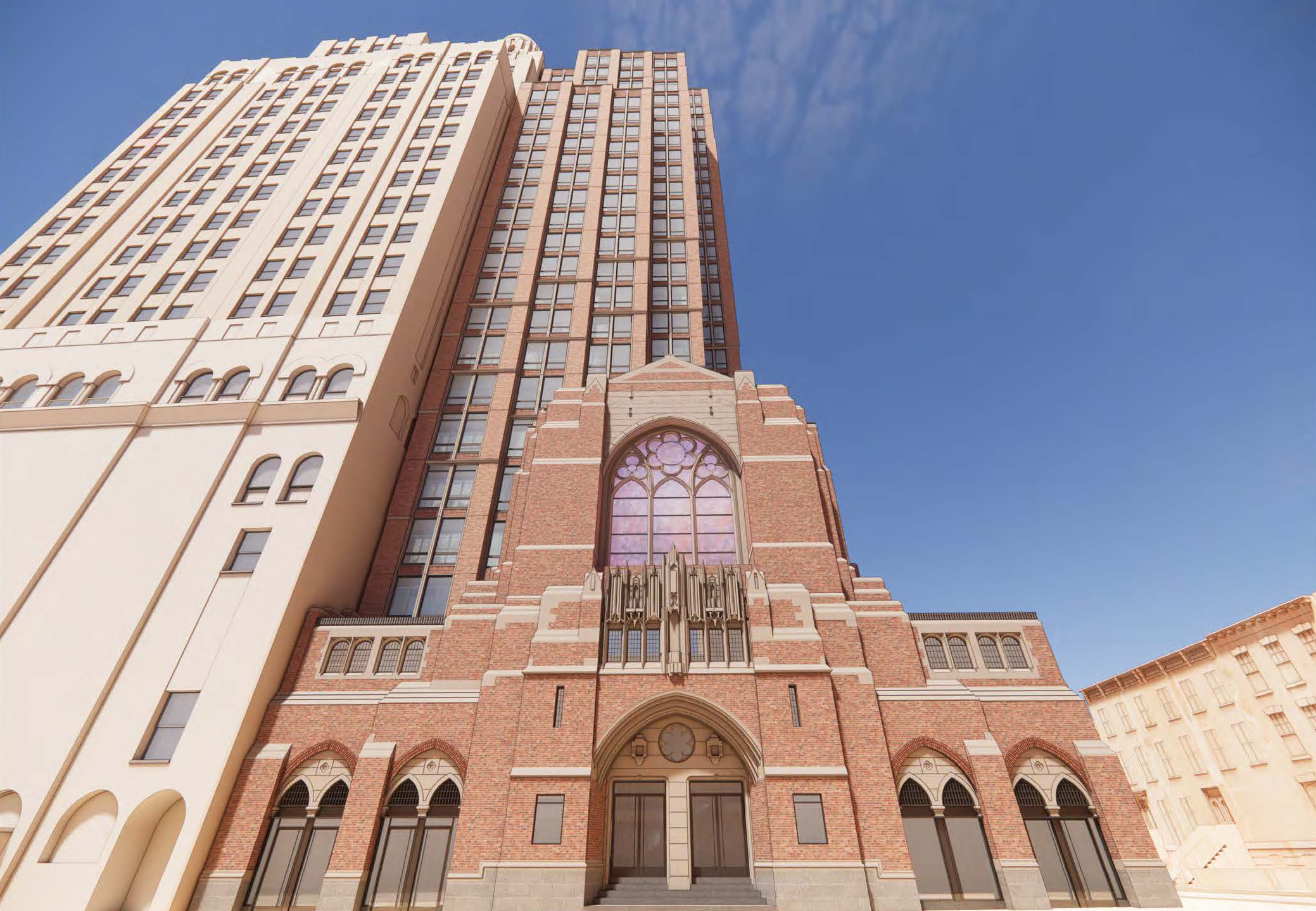Brooklyn Museum Selling Off Brooklyn's Past
The Atlantic has a fascinating article in its June issue about the Brooklyn Museum’s efforts to sell off a collection of important terra cotta decorative carvings salvaged by a donor from construction sites around Brooklyn and Manhattan in 1950s. Ivan Karp, an 83-year-old art dealer who spearheaded the salvage effort and later donated hundreds of…


The Atlantic has a fascinating article in its June issue about the Brooklyn Museum’s efforts to sell off a collection of important terra cotta decorative carvings salvaged by a donor from construction sites around Brooklyn and Manhattan in 1950s. Ivan Karp, an 83-year-old art dealer who spearheaded the salvage effort and later donated hundreds of pieces to the Brooklyn Museum, is now understandably distraught that the museum, which has left many of the pieces exposed to the elements for the past decade, is planning to sell a large part of the collection off through the Harlem salvage dealer Evan Blum of Demolition Depot. This despite a 2007 letter from Arnold Lehman to Karp assuring him that whatever pieces the museum did not use in its redesigned sculpture garden would be returned to Karp, who started a small museum in Charlottesville in 1985 to house these types of objects. Here’s the part of the story when the writer informs Karp of the “deaccessioning” plans:
When I told him that the Brooklyn Museum was planning to auction off so many ornaments through Blum, Karp was astonished. If they’re deaccessioning to sell, that’s very discomfiting, he exclaimed. They should have offered them to me first to buy! As it happened, Karp had phoned Blum, whom he’d known and liked for decades, just the day before. Blum had told him that he was consulting with the museum about the expansion of the sculpture garden, but he did not mention anything about auctions.
Shaking a little, Karp began to leaf through a copy of the binder the museum had sent Blum, which I had brought to the gallery. Good grief! he cried at the sight of a carved brownstone tenement plaque of Abraham Lincoln, which had once been a centerpiece in the sculpture garden. That’s one of the most valuable pieces they have! It’s an historic American figure—how many like that have ever been carved by an anonymous person in homage to Lincoln? This is heartbreaking. A moment later, after peering at a majestic red terra-cotta boy, he said, They’re making serious blunders in many cases.
As he inspected the images, Karp shrank into his chair, until at last, looking very old and defeated, he announced he simply couldn’t look anymore.
Sad.
Update: After the jump, check out the letter to the editor of the Atlantic that was just sent by the Brooklyn Museum.
Ghosts of New York [The Atlantic]
Re: John Freeman Gill article in The Atlantic Monthly on the Brooklyn Museum Collection of Architectural Fragments
The Brooklyn Museum regrets that the author’s comments do not reflect the substantive content of his hours of conversation with Museum staff, or of the extensive and detailed information subsequently provided in response to his questions. The Brooklyn Museum always investigates a range of possibilities for public disposition of works that have entered the deaccession process (the first step in releasing objects from a Museum’s collection), but currently has no agreement with any sales venue regarding the sale of recently deaccessioned architectural fragments. The Museum looks forward to continuing our plans for the full installation of the architectural sculpture collection, in consultation with specialists in the field who in recent years have contributed to the first qualitative assessment of these holdings.
Arnold L. Lehman, Director Brooklyn Museum
Teresa A. Carbone, Andrew W. Mellon Curator of American Art, Brooklyn Museum





As a legal matter, you’d have to see the original exchanges at the time of the donation. The 2007 letter, even if it were a promise, does not appear supported by consideration, so it’s not a contract, and doesn’t appear designed to get Karp to part with anything else, so it’s not fraud (even assuming Lehman was lying to him, for which there’s no evidence). I’m not an expert in NFP corporation law, but perhaps there’s something in there about restrictions on what can be done with donations — I think there might be something like that for charities, but I just don’t recall.
Otherwise, when you give somebody something, they can do what the want with it — hang it on the wall, sell it, pee on it, whatever. Karp presumably got some kind of tax deduction for his donation. If he wanted to put strings on the donation, he had the opportunity to do so. I feel badly for him because he’s obviously upset and obviously has behaved decently here. But if the Museum can realize more value by selling, then barring those strings, it can do so.
Okay so this stuff was donated in the 1950s? Unless there was an agreement between the donor and the museum that imposed an obligation on the museum to return the items if they no longer wanted them, the donation was an absolute free gift. The museum is entitled to keep or dispose of any donated item as it sees fit.
Prominent museums and art galleries receive an astonishing amount of stuff as donations, most of it is not suitable to be included in the collection. Many museums and art galleries no longer accept donated art or artifacts unless they are of a type that they would purchase for their collections. Most museums and art galleries refuse any donations with strings attached – it is too much of a headache accounting for these type of items.
As far as I am concerned, the Brooklyn Museum is entitled to sell the stuff. If you want it, buy it.
Ty;
I’m referring to some of your other recent comments on other threads.
I think HDL makes a fair point at 12.09.
“the right thing is to give the donation back to him, especially since he wants them back”
My only point.
I’m not necessarily opposed to museums selling items in their collections to buy other items and, for example, upgrade their collections, as with the impressionist example someone gave above.
In my mind this is not a legal matter but a “do the right thing” matter. Karp donated these objects and the museum accepted them so that the public could enjoy them into the future. The museum decided to change focus or deemed it unfeasible to display them at some point. Thats fine. But fairness should dictate that the original donor be consulted on the disposition of the objects especially considering that Karp is still alive and well. We’re not dealing with relatives five generations removed from a compensated transaction as Tybur6 equates.
They should have plainly stated to Karp that as much as they liked the objects they have a new focus and would he like to arrange transfer to another institution or allow the sale and thank him for his generosity.
Sheeesh.
The Brooklyn Museum is in desperate need of money.
Worse, this is our fault really. If every one of the 2,500,000 citizens of Brooklyn donated $100 to $200, we would have enough money to actually finish the museum – making it four times it’s present size and realizing a century’s worth of effort.
The problem the museum has is their collection is absolutely huge, but because the museum was never finished it all sits in storage.
Too bad for this guy, but let’s not pretend we aren’t all to blame for the languishing of such an important institution in the second most densely populated county in the country.
Well said, wasder and greenwoodgeneral.
Tybur, I think that in order to survive, as well as be relevant to a vast host of people, the Museum will continue to have all kinds of exhibits. It can’t, nor should it try, to be a 19th century, upperclass drawing room of Old Masters. And I think everyone understands, including Mr. Karp, that from time to time things are sold off, to make room for more. This was just shady doings, and a slap in the face to a living donor.
ROFL about Dodge City slope.
I know another person who has started a thing called the “Recent Past Preservation Network.” She seeks to protect buildings that are old enough to be landmarked but not really old enough to be recognized as “valuable” in a historical context. She is one of the people who are central to trying to save Neutra’s Cyclorama Center at Gettysburg, which is a modernist spaceship of a building that offends the sensibilities of the Civil War buffs at G-burg.
The brooklyn museum’s current exhibits include historical houses recreated from Manhattan, North Carolina, Brooklyn, and I think some other places- the focus isn’t on ‘brookleana’ as much as the development of housing, and architectural decoration- it ranges from pre-colonial, federal, victorian, deco, etc… these pieces surely fit in with that, regardless of Brooklyn focus.